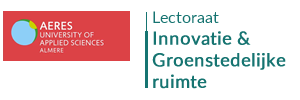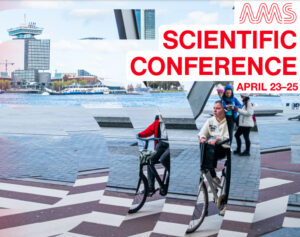| Publication year: 2021 Public Outdoor Spaces and Covid-19 Symposium, Wageningen University & Research. THEME 2: Wider perspective: How is the pandemic changing our use and perception of outdoor public spaces? Rewilding at street-level for incremental gains and a sustained promotion of human well-being Authors: Professor Gideon Spanjar 1,2, Keywords: Rewilding Cities, Urban Ecosystem Services, Well-being, Incremental Gains ABSTRACT: People during this Covid-19 year were forced to spend more time at home due to the lockdown and extreme weather conditions. Before the crisis, people already spent approximately 90 percent of their time indoors (WHO, 2013) and relied on nearby public outdoor spaces for social and physical activities to maintain their health and well-being. During the pandemic, unhealthy, overcrowded, uncomfortable outdoor public spaces and a lack of greenery likely encouraged people to stay indoors even more. In city centres, greenery is often scarce: municipalities struggle to find nature-based solutions that meet the multiple functions of these areas. Fortunately, pandemics appear to spur cities to create healthier, greener environments. The nineteenth-century cholera pandemics, for example, led many western cities to establish large public parks to act as green lungs. These include Central Park and Prospect Park in New York, designed by the influential landscape architect Frederick Law Olmsted. The Covid-19 crisis creates the momentum to bring nature back into our cities and to repair vital ecosystem functions and derived Urban Ecosystem Services (UESs). In this action-research study we adopted the Panarchy model (Gunderson & Holling, 2002) and its principle that initiatives on a fine-grained scale can eventually have a positive impact on the entire ecosystem. Green interventions at street-level hold the promise that they may activate communities to initiate change for more social-ecological resilience. This paper describes two experimental projects: The Climate Cube, installed at a shopping centre in the Nieuw-West district in Amsterdam, and the Rewilding Stepping Stones in the centre of New Town Almere. The Climate Cube consists of a pergola, large, interconnected planter boxes, and benches on each side and acts as a cool social spot. The aim is to explore how it might improve visitors’ (thermal) comfort and to build community support before larger redevelopment projects are launched. The Rewilding Stepping Stones are made of biobased and recycled materials and planted with native species to encourage nature to return to the city centre. The UESs Model (McPhearson, et al., 2015) has been applied to evaluate and structure the potential and derived benefits from street-level interventions and to explore their value for building socialecological resilience. The (preliminary) results indicate a high level of public approval for these urban greening and rewilding projects. Incremental gains can be achieved between larger green spaces to improve the permeability of species. Strategically placed green stepping stones in busy, paved spaces improves users'(thermal) comfort, for example at mobility hubs and in areas that residents depend on for shopping and other aspects of their daily routine. Scaled up, the stepping stones could create a green network of various public outdoor spaces where people can easily connect with nature (during a crisis) and restore their well-being according to their specific needs. REFERENCES |


